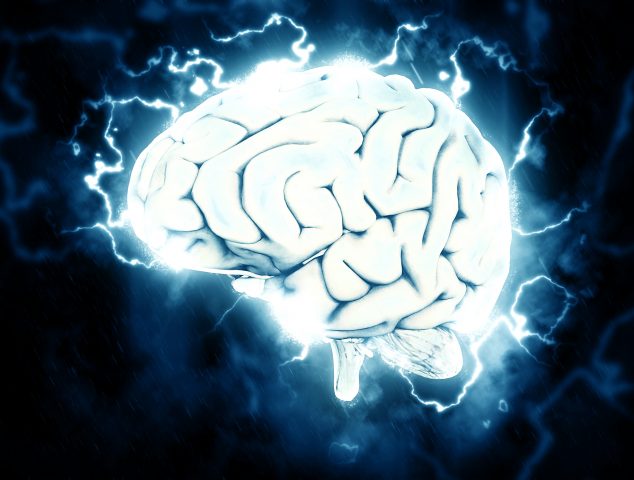

It can also have a terribly disruptive impact on our brains – prompting “fight or flight” responses that keep us in a state of high alert and defensiveness until we can find relief and feel safe or relaxed.
Stress impacts each person differently, and recent research suggests that certain people have characteristics that make them much more resilient to it than others, perhaps sparing them from the use of unhealthy behaviors like binge drinking, anger outbursts, and other maladaptive behaviors to cope with discomfort. The key, researchers have now discovered, is in their brain circuitry.
Previous studies have consistently shown that repeated and chronic stress damages the structure, connections, and functions of the brain’s prefrontal cortex. The prefrontal cortex is the area of the brain responsible for higher order functions such as language, social behavior, mood, and attention, and which also helps regulate emotions, and more primitive responses.
Scientific and medical concerns around repeated, significant exposure to stressful stimuli (and environmental stress surrounds us in our daily lives – think work, relationships, finances, etc.) is that if we don’t find healthy ways of dealing with it, we can literally get “stuck” in a negative loop, where all we do is deal with an imminent perceived threat.
Our body releases cortisol and adrenaline in response, and we have a hard time focusing on other things. We are “wound up,” as they say, readying ourselves for some response.
But some people seem to be able to escape this short circuiting, it has been observed. And scientists wanted to better understand why. To test human response to stress, a number of experiments have been conducted.
But this most recent Yale- and National Institutes of Health- sponsored study focused on looking at how our brains might find a “work around” to staying in the stressful spin that sometimes prompts people to overeat, act out, drink or use substances heavily – a whole range of stress relieving activities that are often unhealthy and damaging in their own right.
As part of the research, thirty participants were given functional MRI (fMRI) scans while exposed to highly threatening, violent, and stressful images and to neutral, non-stressful images for six minutes each. The scientists found three distinct patterns of response to the stressful stimuli.
The first pattern was characterized by sustained neural activation of brain regions that signal, monitor, and process potential threats. The second response pattern involved a dynamic pattern with increased and then decreased activation, perhaps a sign of the brain’s natural way of reducing initial distress to a perceived threat.
Finally, in a third pattern, subjects showed first a decrease of activity in the ventral medial prefrontal cortex (VmPFC), then an unexpected increase in activation, suggesting an adaptive response that, interestingly, corresponded with participants’ self-reported ability to better weather the sustained stress exposure.
The lead researchers in the study argue that this different and adaptive way in which the brains of some become more active and essentially “reach out” to other areas not typically tied to a traditional fight or flight response, is key. They suggest subjects that had this third pattern of response to stress have a level of “neuroflexibility” that helps them to stabilize under conditions that continually bother other subjects.
“Higher levels of neuroflexibility in this area of the brain helped predict those who would regain emotional and behavioral control during stress,” said Rajita Sinha, the Foundations Fund Professor of Psychiatry, director of the Yale Stress Center and lead author of the study. “The VmPFC seems to be the area of the brain which mobilizes to regain control over our response to stress.”
The research is exciting in that it continues to unearth new information about brain function and how we respond to the outside world – and sometimes even internally generated drama and trauma cues. But it is also helpful in that it has real implications for predicting, or recognizing, those who might have maladaptive responses to stress, including self-medicating through drinking and drug use.
If used appropriately, as part of other interventions for those who are beginning to show high levels of stress or unhealthy coping, the information can be used to get them help early to avoid long-term self-imposed damage.
BTG has long recognized the critical role that brain health and neurological balance play in the ability of individuals to cope with life’s challenges, particularly those showing patterns of substance abuse and unhealthy coping.
Our approach to treatment focuses on rebuilding neural pathways through healthy eating and amino acid replacement, as well as retraining our brains to find natural balance and relaxed states of concentration through proven, progressive modalities like neurofeedback.
These practices, combined with targeted education, group and individual therapy, as well as a foundation in “12 step” programming and principles have been keeping our clients healthy, happy, and sober since 2000.
If you or a loved one is struggling with an addiction that may have begun as a way to relieve – or escape – stress and trauma, call 540-535-1111 to speak to an admissions representative and learn more about our programs and unique approach to client care. No one should be resigned to trading one form of pain for another.